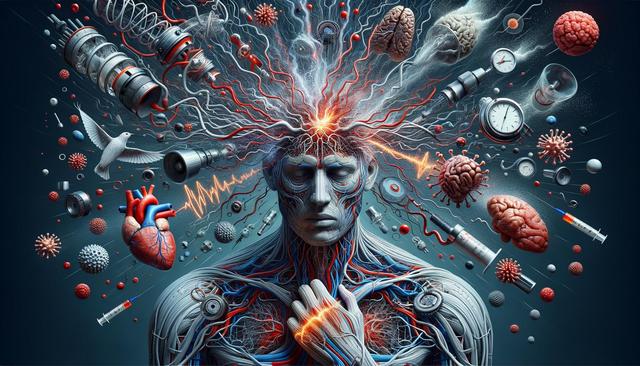Recognizing Stroke Symptoms Early Can Save Lives
Understanding the early signs of stroke can lead to faster treatment and better recovery outcomes.

What Is a Stroke?
A stroke occurs when the blood supply to part of the brain is interrupted or reduced, preventing brain tissue from getting enough oxygen and nutrients. Brain cells begin to die within minutes, making stroke a medical emergency that requires immediate attention. There are two main types of strokes: ischemic, which is caused by a blockage in an artery, and hemorrhagic, which results from a blood vessel rupture. A third, temporary condition known as a transient ischemic attack (TIA) or mini-stroke, can serve as a warning sign for future strokes. Early recognition of stroke symptoms is crucial because prompt medical treatment can minimize brain damage and improve the chances of recovery.
Common Symptoms of Stroke
Stroke symptoms can vary depending on the part of the brain affected, but there are several common warning signs that should never be ignored. The acronym FAST can help people remember the most typical stroke indicators:
- F: One side of the face may droop or feel numb. Ask the person to smile and see if the smile is uneven.
- A: Sudden weakness or numbness in one arm, especially if one arm drifts downward when both arms are raised.
- S: Slurred speech or difficulty speaking or understanding speech.
- T: If any of these signs are observed, seek emergency help immediately.
Other symptoms may include sudden confusion, vision problems in one or both eyes, dizziness, loss of balance or coordination, and a severe headache with no known cause. Recognizing these symptoms early can save lives and reduce long-term disability.
Less Common but Serious Signs
While the FAST signs are the most widely recognized, strokes can also present with less typical symptoms that are still serious and warrant immediate medical evaluation. These include:
- Sudden nausea or vomiting not linked to another illness
- Brief loss of consciousness or fainting
- Sudden memory loss or confusion
- Sudden trouble walking or moving
- Unexplained pain, especially in the face or limbs
These symptoms are sometimes mistaken for other conditions, particularly in younger individuals or those with no history of cardiovascular problems. It’s important not to dismiss these signs, especially if they appear suddenly and without a clear cause. Even if symptoms seem to resolve quickly, as with a TIA, immediate medical attention is critical because it could be a precursor to a more serious stroke.
Risk Factors to Be Aware Of
Certain risk factors can increase the likelihood of experiencing a stroke. Understanding and managing these can play a big role in prevention. Common risk factors include:
- High blood pressure
- Heart disease
- Diabetes
- Smoking
- Obesity
- High cholesterol
- Excessive alcohol consumption
- Family history of stroke
Age and gender also play a role, with risk increasing as people get older. However, strokes can happen at any age. Men generally have a higher risk, but women may have worse outcomes from stroke. Regular health check-ups, a balanced diet, exercise, and avoiding tobacco and excessive alcohol are effective ways to manage these risks. Being aware of personal risk factors can also prompt quicker action in the event of warning signs.
When to Seek Immediate Help
Time is critical when dealing with a stroke. The faster a person receives medical treatment, the better the chances of limiting brain damage and improving recovery. Emergency medical services can begin treatment on the way to the hospital, so it’s important not to delay. Do not attempt to drive the person to the hospital yourself unless there is no other option. If you’re unsure whether symptoms are due to a stroke, it’s always safer to err on the side of caution and seek emergency care.
In some cases, healthcare providers can administer clot-busting medications or perform procedures to restore blood flow, but these treatments are highly time-sensitive—often requiring administration within three to four hours from the onset of symptoms. This is why recognizing stroke symptoms and acting quickly is so vital.